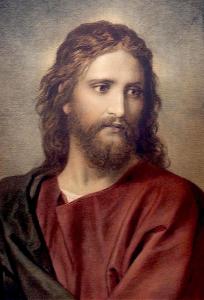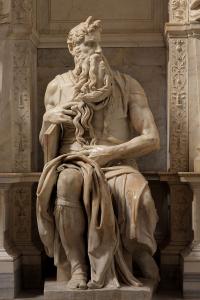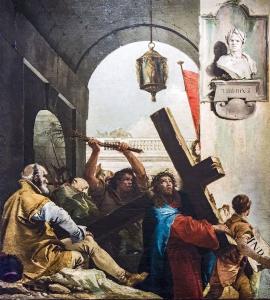 The Narrative Lectionary includes many verses that precede this famous tale (8:27-9:1), but since this Sunday has long been named “Transfiguration Sunday,” it seems appropriate to focus our attention on the scene as Mark depicts it. Besides, no more spooky story may be found in the gospels, with its spookiness spiked with slapstick humor. What better combination can a preacher find?
The Narrative Lectionary includes many verses that precede this famous tale (8:27-9:1), but since this Sunday has long been named “Transfiguration Sunday,” it seems appropriate to focus our attention on the scene as Mark depicts it. Besides, no more spooky story may be found in the gospels, with its spookiness spiked with slapstick humor. What better combination can a preacher find?
“Six days later, Jesus took Peter, James, and John and led them off by themselves to a lofty mountain” (Mark 9:2). Mark is unusually precise by naming the days as precisely six between the clear announcement of Jesus’s identity by Peter (Mark 8:29) as Messiah (“anointed,” uttered for the first time since 1:1), and Jesus’s strict demand that no one is to know about it. Then, after teaching them about what the “human one” (“son of Adam”) must do, namely be rejected and handed over for suffering, Peter claims he wants nothing to do with any of that stuff, and is roundly rebuked by Jesus as “Satan,” hardly a nice name to give to one of one’s friends (Mark 8:29-33)! Though Peter has apparently answered the question the disciples asked at 4:41 (“Who can this fellow be?”), they, along with us readers, are not yet close to knowing quite what all this means. The final answer will only be provided at the Gospel’s very end.
The fact that the scene is set on a “high mountain” should trigger for us the memory of a central scene from the Hebrew Bible. Once again, we are reminded of the story of Moses on Mount Sinai. Here are the words from Exodus 24:16: “The clouds covered it (Sinai) for six days; and on the seventh day YHWH called to Moses out of the cloud.” That may suggest why Mark is suddenly so precise about the timing of the scene. Moses is the great teacher of Israel and so will Jesus be a great teacher, found on a mountain and surrounded by disciples eager for a word from God as mediated through a chosen prophet. Mark 9:1 promised that some of those “standing here” (the disciples) will not taste death before they see God’s rule come with power!” Might this transfiguration scene be the fulfillment of that promise?
Suddenly, the Jesus whom they had been following, and trying so hard to understand, “was transformed in front of them, and his clothes became an intensely brilliant white” (Mark 9:3). Mark again refers to Moses, “the skin of whose face shone because he had been talking with God” (Ex.34:29). (Note: It is here that we find the origin of the horned statue of Moses that Michelangelo famously and brilliantly sculpted, the Latin Vulgate Bible misreading the Hebrew that does on occasion mean “horn,” while here it surely means “glow/shine”.) Jesus, like Moses before him, is transformed, or more picturesquely “transfigured,” literally turned into something else entirely. And at the same time Jesus is undergoing this radical change, the aforesaid Moses, along with Elijah, appear and are seen chatting with Jesus.
Because Elijah went directly to heaven at his end (2 Kings 2:11), while Moses had no known place of burial, both are legendary figures who somehow miraculously in effect avoided death. Their appearance in the scene prefigures the astonishing resurrection of Jesus at the end of the gospel. In addition, Elijah and Moses were also  major prophets, Moses the only prophet who had talked to God “face to face” (Deut. 34:10) and Elijah a prophet who had fled to Moses’s mountain and encountered the voice of God (1 Kings 19:9, 13). Much speculation about the possibility of future divine prophets is based on Moses and Elijah (Mark 1:6; 6:15; 9:11). In Judaism, Moses was the first great prophet, and Elijah was the bringer of righteousness and the forerunner of the Jewish Messiah.
major prophets, Moses the only prophet who had talked to God “face to face” (Deut. 34:10) and Elijah a prophet who had fled to Moses’s mountain and encountered the voice of God (1 Kings 19:9, 13). Much speculation about the possibility of future divine prophets is based on Moses and Elijah (Mark 1:6; 6:15; 9:11). In Judaism, Moses was the first great prophet, and Elijah was the bringer of righteousness and the forerunner of the Jewish Messiah.
And now it is time for Peter to once again put his sandal in his mouth. “Rabbi, it is a good thing we are here. In fact, why not set up three tents, one for you, one for Moses, and one for Elijah! (He did not know how else to respond, since they all were terrified)” (Mark 9:5-6)! Peter’s suggestion of tent building could have several meanings. First, it may be a reference to the shelters set up for a celebration of the Feast of Tabernacles, the annual harvest festival reminding Jews of the tents employed in the wilderness during the Exodus. This would make Peter out to be a defender of Jewish tradition. Second, it may refer to the famous Tent of Meeting described during Moses’s encounter with God on Sinai (Ex.26). Third, perhaps Peter would like to set up camp on the mountain in order to prolong this fabulous experience. Any of those is possible, I suppose, but the note at vs. 6 suggests that in reality Peter is overcome by the whole scene and is babbling the first thing that pops into his head. His desire for tent building may mean nothing more to him than “Hey, Jesus, how about some tents!” He has no clue what he is talking about, though the reader may read into his shouts all manner of biblical references. In effect, Peter is an echo of the readers of the scene; we hardly know what to make of what we are seeing!
But now comes the essence of the experience. “A cloud moved in and cast a shadow over them, and a voice came out of the cloud: ‘This is my favored son; listen to him’” (Mark 9:7). The words spoken by God are much like those heard by Jesus at his baptism (1:11), except that this time they are directed to the disciples (and to us!) and not only to Jesus. “Listen to him” sounds rather like Deut.18:15: “God will raise up for you a prophet like Moses—listen to him.” And so, we may conclude, that prophet has now appeared, and we must tune our ears to what he says. The scene ends with an obvious climax: “Suddenly, as they looked around, they saw no one, but were alone with Jesus” (Mark 9:8).
The implication is clear. Moses and Elijah are great and mighty prophets, voices from Israel’s past that have played huge roles in the ongoing drama of God and the world. But now, there is Jesus, the favored one, unique as prophet and son of God. The plot of Mark’s Gospel hurls forward as the identity of Jesus becomes ever clearer, and as that identity will clash again and again with forces in his world that will lead to his destruction. And we, like Peter, are increasingly terrified, unable to discern the full answer to his coming, and unwilling to follow him on his inevitable way to the cross.
(Images from Wikimedia Commons)











